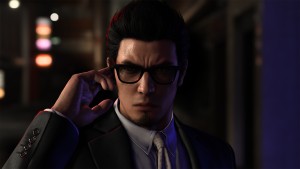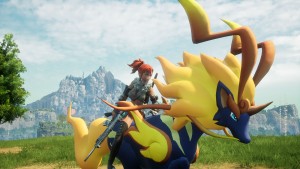Danganronpa V3: Killing Harmony Review

Danganronpa has always hinged on surprises, including deviously intricate murders and elaborate twists. Who is the killer? Who is the next victim? Who is pulling the strings? Uncovering the answers to these questions while watching high-school students deal with the drama is the core appeal of this visual-novel series. Danganronpa V3 taps into the same vein, but the flow is weaker and more dilute this time. After two installments full of rising stakes and escalating expectations, Danganronpa fans are savvy; in its attempts to surprise players, this entry occasionally performs strained storytelling gymnastics that make the pivotal moments feel more arbitrary than satisfying.
Because so much of the experience is about the unfolding narrative, I can’t be specific without ruining major developments. But in a general sense, the premise in Danganronpa V3 hasn’t changed much: A group of exceptionally talented students are trapped in a school and forced to play a killing game according to strict rules set out by Monokuma, a demented mechanical bear. Suspicions abound as you explore the areas and converse with your classmates. Once a murder happens, you uncover clues that gradually paint a picture of the crime and its perpetrator. You expose the culprit during a class trial, and after a grim execution, daily life resumes until the next killing.
I still enjoy the basic structure, since the cases provide a sense of resolution while you ponder the larger mysteries. However, the individual scenarios in V3 are my least favorite in the series. While the chapters have a fair share of entertaining moments, several of the payoffs are flaccid. Identifying the killers in the first two Danganronpa games were thrilling “gotcha” moments, but V3 is more uneven – even going in with a healthy suspension of disbelief. Gaps in logic and unclear motivations drain the righteous justice from big reveals; though the development team succeeds in making the culminations unpredictable, the surprises come more out of left field than from clues fitting together. I was also majorly disappointed by the grand finale – a highlight of previous entries – but to say anything more than that would reveal too much.
Despite my complaints about the plot, the cast of characters participating in the events is entertaining. I liked getting to know them more than the cast of Danganronpa 2, with only a few duds among the 16 students (particularly the ultimate inventor, whose vulgar dialogue tries too hard to be shocking). When you have free time to spend, your interactions take on a thrilling degree of urgency, since you never know if your favorite characters will survive the coming day. I especially liked my conversations with the ultimate maid and the ultimate supreme leader. Yes, the well of ultimate talents is running dry, as evidenced by bizarre specialties like ultimate entomologist and ultimate robot. But even if their primary talents are weird, the characters’ backstories and growth are usually compelling.

An all-new cast means that you can jump in and enjoy most of the story without playing previous Danganronpa titles. It’s largely standalone, though knowledge of past characters and events enriches various sequences. On the other hand, considering how few changes the series has undergone over time, I can’t imagine why anyone would start with this installment. Apart from a different selection of reliably terrible minigames that interrupt the class trials (a consistent crack in the series’ foundation), no groundbreaking advances have been made, so you may as well start at the beginning and get the full experience.
The one thing that V3 does better than its predecessors is post-game content. After completing the main story, you can access new modes to prolong your time in the universe. One is framed as a dating-reality show that lets you continue building relationships with characters, filling in the gaps you left during your playthrough. However, the most interesting way to keep playing is two connected modes that have you building characters via a board game, then building a party with those characters in a separate dungeon-dive inspired by old-school RPGs like Dragon Quest. Though not exceptionally deep, these two linked modes feature the cast from the entire Danganronpa series, offering a breezy-but-fun treat for fans like me.
The mysteries of Danganronpa V3 may not offer the same rewarding highs as previous entries, but the core formula remains entertaining despite some missteps. I still had fun piecing together the murders and learning about the characters, which is enough to help V3 earn its passing grade, though it isn’t graduating with honors.




















